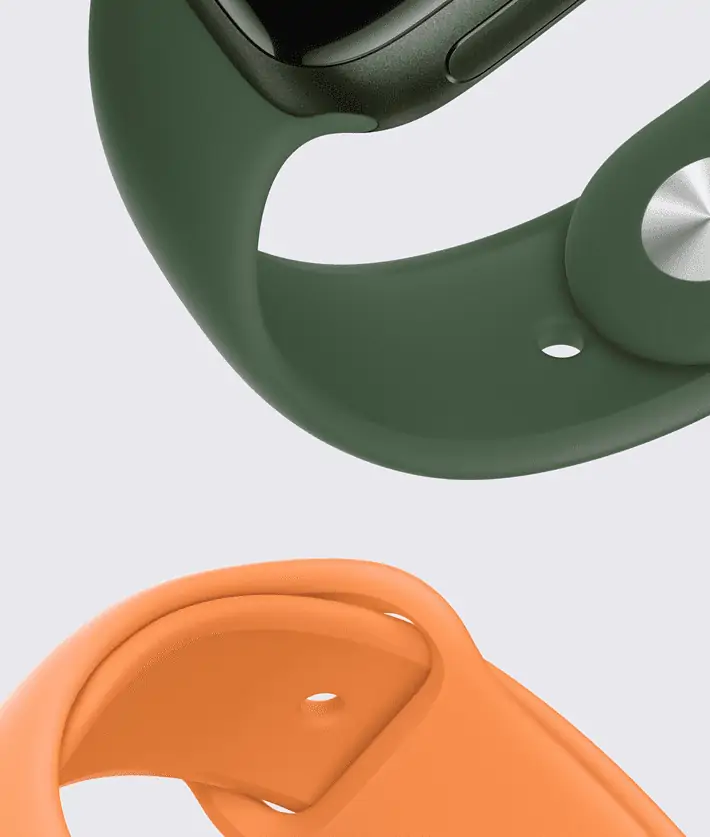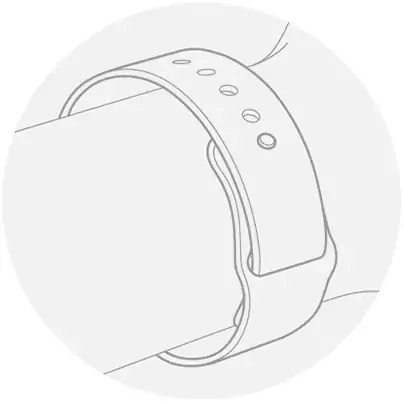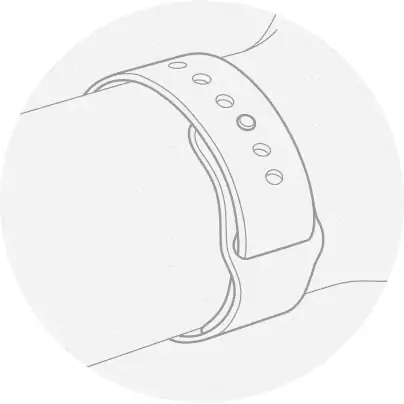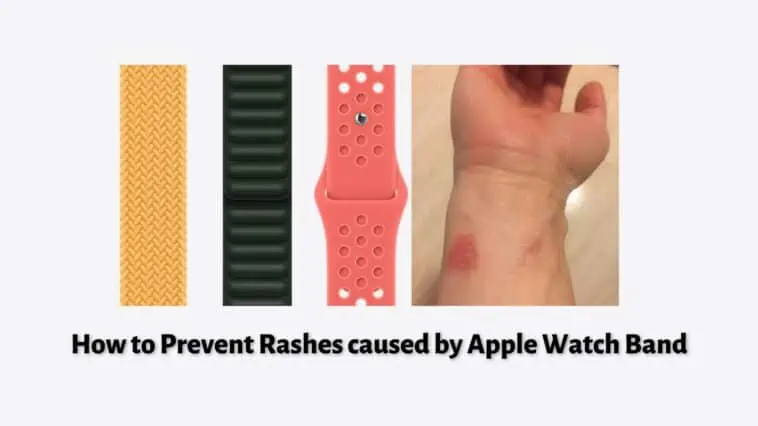Apple Watch causing rashes and irritation on your wrist? Learn how to prevent rashes caused by Apple Watch band in this guide.
Apple Watch is a device that you have to wear as much as you can to get the most out of it. It is feature-rich and is an excellent gadget for fitness.
Apple Watch can measure your heart rate, and oxygen levels, and track your activities. But for this, you will need to make sure that you are wearing it at all times.
While wearing it all the time seems like a simple task, you have to know that this can cause some issues too when not done properly. These issues can be skin irritation, swelling, redness, and rashes. There are multiple reasons why such issues are caused.
There are also things you can do to prevent these issues and this article will guide you on how to prevent rashes caused by Apple Watch band.
Related: How to Clean Apple Watch Band
How to Prevent Rashes caused by Apple Watch Band
Table of Contents
Before we get to know how to prevent rashes caused by Apple Watch band, let’s get to know how the rashes are caused.
How are rashes caused by an Apple Watch band?
Many users have reported that using the Apple Watch causes rashes on their wrists. Users shared pics on social media platforms like Twitter, Instagram, and blogs too. Users had red rashes on their wrists where they had their brand-new Apple Watches.
Most people accuse Apple of not testing for allergies or sensitive skin before starting to sell them. People also thought that the rashes were caused because of an allergy to the band materials.
While this was back in 2015 when the first Apple Watch launched, things have calmed down, because we now know the cause of these rashes. Now we also know how to prevent rashes caused by the Apple Watch band.
There isn’t one real cause for Apple Watch band rashes but multiple potential causes. Some of the main causes are allergic reactions, sweat, fit, etc. Let’s explore each cause in detail below.
Sweat
Sweat is one of the main reasons for the rashes caused by Apple Watch bands for most people. Apple Watch is a device that people wear all through the day which is mostly attached tightly to the skin. Here is an explanation from a renowned Dermatologist.
“You take enough people, and you put something tight-fitting on their arm and they do their day-to-day, whether it’s sweating or washing their hands, potential irritants can push through the outer barrier and disrupt the skin cells, disrupt the skin,” said Dr. Adam Friedman, the Director of Dermatologic Research at Montefiore Medical Center in the Bronx, New York City. “Most of the problems are from contact dermatitis,” a rash where your skin comes into contact with an irritating substance.
Another Dermatologist Dr. Joel Cohen, Director of Aboutskin Dermatology, in Colorado added that “Not every irritation is an allergy, and we do see irritation from trapping moisture, sweat, and friction, but some people are truly allergic to some things, like nickel.”
All this makes it clear that sweat and wearing an Apple Watch tightly can cause irritations and potential rashes. The next section will deal with how wearing an Apple Watch wrongly can cause rashes.
The Fit of an Apple Watch
Users need to wear Apple Watches correctly so that they can get the information from the heart and SpO2 sensors correctly while it should also be comfortable and safe to wear.
Wearing an Apple Watch too tightly can cause issues and irritation which can lead to rashes. Wearing it tightly can also reduce blood flow near your wrists. Wearing an Apple Watch too loose means the sensors on the back won’t be able to read properly. Wearing an Apple Watch loose can also constantly rub against your skin and this can cause irritation that can lead to rashes.
So make sure to wear your Apple Watch just tight enough that the back is in contact with your wrist while it is not too tight to cause any issues like rashes.
Allergic Reactions from Materials
Apple mentions that they choose the best possible materials that adhere to regulations and exceed those expectations. They say that the materials chosen go through extensive tests like,
- Thousands of material composition tests
- More than a thousand prototypes were worn for trial studies
- Thousands of toxicological assessments
- Consultations with board-certified dermatologists
But even then some people (a small percentage) will experience certain reactions to the materials used. And the reason for these reactions can be allergies, environmental factors, sweat, irritants, and more. Here are some materials that can cause allergic reactions, these materials are present in Apple Watch bands,
Nickel
Apple Watch models with aluminum and stainless steel cases, bands made from stainless steel, magnets in them, and other metallic portions containing nickel in them. The amount of Nickel present in these materials is below the restrictions set by European REACH regulation.

So Apple says that Nickel shouldn’t be a problem but you should be aware of the fact that Nickel is a material found in Apple Watch and Apple Watch bands, and this can cause issues to some sensitive users. These issues can be allergic reactions that can lead to rashes.
Acrylates
Apple Watch has acrylates and methacrylates present in it. These are materials found in the Apple Watch case, some of their bands like the Nylon loop, the Milanese Loop, the Modern Buckle, and more.

Acrylates are used as adhesives and can be found in many consumer products like adhesive bandages, smartphones, and more. Both acrylates and methacrylates can cause allergies to some people who are sensitive to them. Some people can even develop sensitivities over time with such materials.
Apple Watch and its bands are developed in a way that skin isn’t directly in contact with acrylates or methacrylates but it is good to be aware that this can be a potential cause for rashes on your wrist.
What’s in the bands
Apple Watch Band materials can cause rashes and other skin problems if they don’t suit you. Check if you are allergic to any of them, avoid such bands, and get something that will suit your skin.
- Ocean Band: Fluoroelastomer with titanium
- Alpine Loop: Polyester with titanium
- Trail Loop: Nylon with titanium
- Sport Band: Fluoroelastomer with stainless steel, ceramic, titanium, or 18-karat gold
- Apple Watch Nike Sport Band: Fluoroelastomer with stainless steel
- Apple Watch Nike Sport Loop: Woven nylon with reflective threads (aluminum-coated glass beads on PET yarn)
- Hermès Bands: Leather with stainless steel
- Milanese Loop: Stainless steel
- Link Bracelet: Stainless steel
- Leather Loop: Leather with stainless steel
- Modern Buckle: Leather with stainless steel or 18-karat gold
- Classic Buckle: Leather with stainless steel or 18-karat gold
- Woven Nylon: Nylon with stainless steel
- Sport Loop: Woven nylon
- Solo Loop: Silicone
- Braided Solo Loop: Polyester yarn with stainless steel
- Leather Link: Leather with stainless steel
If you are buying third party bands/straps, then check the materials used in them before buying.
How to Prevent Rashes caused by Apple Watch Band
How to prevent rashes caused by Apple Watch band is a question many of you would have asked if you were affected by it previously. Even if you were not affected I am sure you don’t want your Apple Watch band to cause any rashes or discomfort. As always prevention is better than cure, so here are some steps you can take to prevent rashes caused by Apple Watch bands.
- Keep your Apple Watch band clean. Since sweat and dirt are some of the main causes for rashes caused by Apple Watch bands for most people, make sure to clean your band frequently. We have a guide on how to clean your Apple Watch band, read it to learn how to clean your Apple watch safely and effectively.
- Don’t wear your Apple Watch too tight or too loose. Many people think that wearing your Apple Watch tightly is the best way to wear it, but that’s not the case, you need to wear it just right.

Wearing too loose can also cause rashes because of constant rubbing against your skin and wearing loose won’t allow features like haptic vibrations, wrist detection, and sensors like heart and electrical won’t work too.

So make sure to wear your Apple Watch just right, it should be snug and comfortable. Apple recommends wearing your Apple Watch tightly for workouts and loosening it once your workout is done. This way your Apple Watch can record all your activities as intended, and your skin will also be free from irritation or stress at all times.
- If you are sensitive to materials like Nickel, acrylates, or methacrylates, then make sure to avoid bands that have them. Metal, leather, and woven nylon bands feature these materials, so avoid them. Apple says that the amount of these materials is well within regulations but it’s better to avoid them if you have had allergies previously because of them.
What are the Symptoms of a Watch Rash?
There are some symptoms for rashes caused by Apple Watch, these are,
- Red skin
- Itching
- Dry, cracked, or scaly skin
- Blisters
- Burning sensation
- Swelling
If you have these symptoms around the area where you wear your Apple Watch, then you are developing a rash. You can soothe it using aloe lotion, but you should also know How to Prevent Rashes caused by Apple Watch Band so you don’t get them again in the future.
How to treat rashes caused by Apple Watch band
Like any rash, all you need is a lotion with Aloe Vera in it by your side when your skin breaks out. Using this lotion can soothe any rash or irritation. The rash should heal itself over time provided you keep your wrists dry and clean.
If the rash is still persistent, you may want to look for any allergies you have with the materials used in the band and avoid them. Also, consulting your physician is a good idea if the situation doesn’t get better.
Also, follow the instructions on how to prevent rashes caused by Apple Watch band above to prevent and even help maintain rashes.
How to clean your Apple Watch
A clean Apple Watch will prevent you from getting rashes and other skin problems. So follow these steps to clean your Apple Watch.
Step 1 Turn off your Apple Watch. Remove the band if your band is not water-resistant.
Step 2 Dampen a lint free, nonabrasive cloth and wipe your Apple Watch thoroughly.
Step 3 Now, hold your watch case under running water for a few seconds. Make sure you turn it around so the water runs over the entire Watch.
Step 4 Press and rotate the Digital Crown when holding the watch under running water to clear debris.
Step 5 Dry your entire device with a nonabrasive, lint-free cloth. You can also air-dry the Watch.
How to Prevent Rashes caused by Apple Watch Band – Conclusion
If you were someone who had problems like irritation, redness, swelling, or rashes on your wrist after wearing your Apple Watch regularly, then you would have been looking for solutions to prevent them.
Now you know how to prevent rashes caused by Apple Watch band. You also know what caused them and how to treat them too. Hope it helps, and remember that prevention is always better than cure.
Also Read:
- How to make Apple Watch Vibrate for Notifications
- Best Apple Watch Bands for Running
- Best Apple Watch Strap for Swimming
A hardcore Apple fan with a collection of
All series of Airpods
All series of fake airpods from China
All series of Apple watches
One Macbook Pro
One iPhone 13 Pro, one iPhone XR, one iPhone 7


